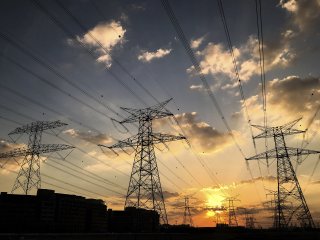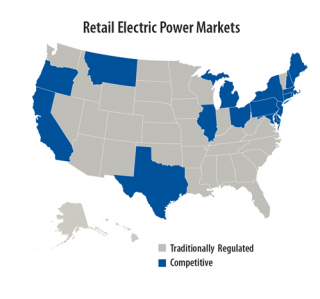
There is a patchwork of federal, state, and local policies and regulations pertaining to renewable energy systems that impact your project development. It is important to understand the policy landscape early in your development process.

A renewable energy certificate (REC) is a market-based instrument that represents the property rights to the environmental, social, and other non-power attributes of renewable electricity generation. Solar RECs (SRECs) are created for each megawatt-hour of electricity generated from solar energy systems. The ultimate owner of the SREC owns the "solar-ness" of the power.
Many states create SREC markets to spur the development of solar by requiring electricity suppliers to purchase SRECs produced by in-state solar systems as part of their obligation under the state’s Renewable Portfolio Standard (RPS). This solar-specific requirement to meet a portion of the RPS with solar resources is often referred to as a “solar carve out.” Through the purchase of the SRECs, electricity suppliers are ensuring that their products meet the RPS-mandated amount of solar power. The monetary value of an SREC in these state markets is determined by supply and demand, with demand largely driven by electricity suppliers needing to meet their solar RPS requirement or pay a compliance premium.
Homeowners and businesses with self-owned or self-financed solar systems in states with SREC markets are able to reduce their costs of electricity by selling the SRECs associated with their systems’ output into the SREC market, for ultimate use by utilities. Homeowners and businesses engaged in solar power purchase agreements (PPAs) hosting third-party owned solar systems in states with SREC markets are able to reduce their costs of electricity by forgoing contractual ownership of SRECs associated with their systems’ output and enabling the system owner to sell the SRECs into the state SREC market. In both cases, however, by doing so, homeowners and businesses preclude themselves from making solar power “use” claims or claims on reducing their carbon footprint. For more on claims, visit the Solar Power Use Claims Guidance webpage.
Below are resources to help you understand how state SREC markets work, which states have SREC markets, and how SRECs may impact your project development.
| Map of State Renewable Portfolio Standards (RPS) with Solar or Distributed Generation Provisions (pdf) | The Database of State Incentives for Renewables & Efficiency (DSIRE), operated by the N.C. Clean Energy Technology Center, is the most comprehensive source of information on incentives and policies that support renewable energy and energy efficiency programs in the United States. DSIRE provides state-specific information on RPSs with solar carve outs or provisions. |
| Database of State SREC Programs | DSIRE, operated by the N.C. Clean Energy Technology Center, is the most comprehensive source of information on incentives and policies that support renewable energy and energy efficiency programs in the United States. This table provides details on state-specific SREC programs, including which type of entities are eligible for the program, what size and type of solar systems are eligible, and information on the financial incentive offered. |
| Solar Renewable Energy Certificate (SREC) Markets: Status and Trends (pdf) | SREC markets have emerged in U.S. states as a method to meet compliance with solar carve out provisions of RPSs. This report, produced by The National Renewable Energy Laboratory, provides an overview of the SREC market and design, as well as the market trends and key issues facing SREC markets. The report was published in 2011, so some information may not be up-to-date. For more recent information about specific policies in your state, check out DSIRE or contact your state’s energy agency. |

Interconnection standards define how a distributed generation system, such as solar photovoltaics (PVs), can connect to the grid. In some areas of the United States, the interconnection process lacks consistent parameters and procedures for connecting to the grid or is unnecessarily complex. This drives up costs and causes delays, which can be significant barriers to project development. The ability to interconnect to the grid in a cost-effective and timely manner may determine whether a project moves forward or not. The continued growth of the distributed solar market has prompted electric utilities, regulators, and others to consider improvements to the interconnection processes.
Below are resources to help you understand the interconnection policy landscape and how it may impact your project development.
| Connecting to the Grid Guide, 6th Edition | Interconnection policies are an essential piece of a supportive state-level regulatory policy framework addressing how project developers will interconnect distributed generation systems to the grid. This guide, produced by the Interstate Renewable Energy Council, Inc. (IREC), introduces the issues surrounding policy and technical considerations of grid-integrated renewable energy. |
| Database of State Incentives for Renewables & Efficiency (DSIRE) | DSIRE, operated by the N.C. Clean Energy Technology Center, is the most comprehensive source of information on incentives and policies that support renewable energy and energy efficiency programs in the United States. It includes information on state-level interconnection policies only, so be sure to check with your local electricity provider about its specific interconnection process and timeline. |
| Model Interconnection Procedures | As costs of renewable energy continue to fall, and more systems connect to the grid, interconnection procedures developed over the last decade are under strain. IREC’s Model Interconnection Procedures summarize a number of best practices for the safe and reliable connection of renewable energy systems to the utility grid. |
| A State-Level Comparison of Processes and Timelines for Distributed Photovoltaic Interconnection in the United States (pdf) | This report, produced by the National Renewable Energy Lab (NREL), presents results from an analysis of distributed solar interconnection and deployment processes in the United States. In the report, NREL assesses the range in project completion timelines nationally and in five states with active solar markets (Arizona, California, New Jersey, New York, and Colorado). The report also assesses the portion of projects that required one month or more for either the utility interconnection application review and approval or permission-to-operate process, as this may indicate a project or process delay. |
| Photovoltaic Systems Interconnected onto Secondary Network Distribution Systems – Success Stories (pdf) | While the number of PV systems interconnected to the grid has increased significantly over the last decade, only recently have PV systems been installed in major metropolitan areas and tied to electric distribution secondary network systems (networks). Utilities use networks to distribute electricity to customers in areas where there are large concentrations of load and where reliability greater than that of a radial system is needed. This report, prepared by NREL, examines six case studies of PV systems that were successfully integrated into secondary network systems. |
| Distributed Solar Interconnection Challenges and Best Practices (pdf) | A survey and interviews conducted by Solar Electric Power Association have uncovered utility initiatives to lower the administrative costs of interconnection, making the process of connecting to the grid simpler and more transparent for project developers. |

Electric utilities in the United States operate under a variety of market structures, depending upon the states in which they operate.
Some states allow market competition for retail energy supply to electricity customers. This trend is called deregulation or restructuring or retail choice. Utilities in deregulated markets are prohibited from generation and transmission ownership and are only responsible for distribution, operations, maintenance from the point of grid interconnection to the meter, and billing ratepayers.
On the other hand, regulated markets feature vertically integrated utilities that own or control the total flow of electricity from generation to meter.
A working understanding of the utility issues in regulated and deregulated state-specific markets allows solar project developers to optimize their energy procurement strategy, anticipate their utility’s concerns, and design projects that emphasize mutual benefits. It is also important to be aware of the specific policies that impact solar development in the state in which you operate.
Below are resources to help you understand market frameworks and how they may impact your project development.
| Understanding Differences in Utility Views Toward Solar (pdf). | This report, developed by the U.S. Department of Energy Solar Market Pathways program, breaks down the key differences among investor-owned utilities, public and municipal utilities, and electric cooperatives. These differences in ownership shape how a utility sets the rates that it charges to customers, and this, in turn, determines the financial impact on the solar generation project. The report also discusses considerations for the different market structures under which electric utilities in the United States operate. |
| Database of State Incentives for Renewables & Efficiency (DSIRE) | DSIRE, operated by the N.C. Clean Energy Technology Center, is the most comprehensive source of information on incentives and policies that support renewable energy and energy efficiency programs in the United States. This tool is used as an informational resource to define various federal, state, local, and utility policies, and to describe how and where these polices are structured and implemented. DSIRE provides specific information on policies that directly impact solar development in your state. |
| The Impacts of Commercial Electric Utility Rate Structure Elements on the Economics of Photovoltaic Systems (pdf) | Compensation for commercial net-metered PV systems is dictated primarily by the utility rate structure under which the solar PV system operates. Electric utility tariffs across the United States consist of many different rate components, all of which have an impact on PV system economics. This report, produced by the National Renewable Energy Laboratory in 2010, identifies the effects of rate structures on system economics, which can help project developers make informed choices in order to maximize their return on investment. |
| Decoupling Utility Profits from Sales: Issues for the Photovoltaic Industry | Investor-owned electric utilities are typical businesses in many respects. Increased electricity sales mean increased revenues and, by association, profits. As a result, utilities have a strong incentive to increase sales and limit activities that reduce sales. This simple relationship captures what is typically called the utility’s “throughput incentive,” which can work against competing public policies that support energy efficiency and distributed resources. |